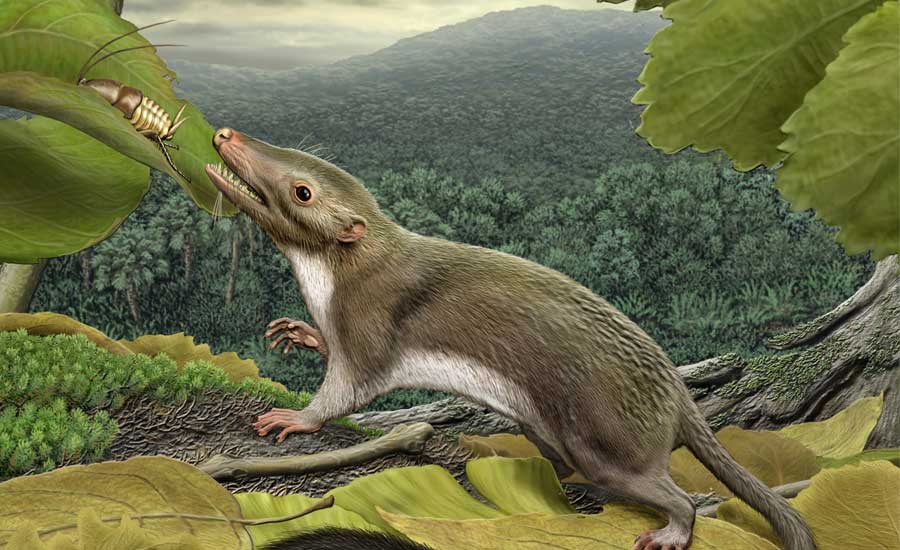
Placental mammals are mammals chatacterised by the presence of a plaenta during development.
A Mass extinction in the Cretaceous period (K/Pg Boundary) led to the extinction of non avian dinosaurs. The ancestors of placental mammals were present during this period.
The extinction of carnivorous and herbivorous dinosaurs opened a variery of dietary niches. Existing mammals utilized the opportunity and radiated into all the available niches.
This is the story of evolution of placental mammals as we have learned from fossils. Now a recent scientific study concluded that the ancestoral placental mammal was an insectivore or insect eater.
But how did they reach the conclusion? Let’s see.
The body of almost all insects is covered with a tough carbohydrate material called chitin. So every animal that feeds on insects are supposed to digest chitin.
This is achived with the help of an enzyme called chitinase. And the genes responsible for producing chitinase enzyme are called chitinase genes.
Humans and mice have a chitinase gene, since many humans and mice include insects in their diets. But humans have remnants of three other chitinase genes in their genome.
None of these genes are functional but exist as pseudo genes. Such non functional chitinase genes are present in the genomes of most placental mammals.
So the researchers studied the genomes of 107 speceis of placental mammals from shrews and mice to elephants and whales. Interestingly, they fount the presence of five different chitinase enzyme genes in these animals.
Now it is evident that nearly all placental mammals have one of five different chitinase genes. Many exist as non functional genes and some as fragments. This suggests that the common ancestor of all placental mammals, living with dinosaurs, was an insectivore.
It is estimated that, highly insectivorous animals have more chitinase genes. The animals with all five functional chitinases today are highly insectivorous.
As the earliest placental ancestor likely had five chitinase genes, it is argumented to be highly insectivorous.
Tarsiers, which are good insectivores are the only primates that have so many functional chitinase genes.
An exception to the rule is an exclusive insect eater pangolin, has only one functional chitinase gene. Pangolins may have evolved from ancestors that have lost the chitinase genes and secondarily got adapted to todays niche.
So, here is the whole story.
Placental mammals were early insectivores and lived along with dinosaurs in the Late cretaceous. Then came the Cretaceous-Paleogene event of mass extinction. Dinosaurs became extinct and opened up lots of dietary niches. The ancestral insectivore occupied all the niches and radiated out. All had five chitinase genes, but those who got adapted for other diets lost their chitinase genes through accumulation of various mutations. As they have changed the diet already, nothing checked the mutations. And those gene remnants passed on to all mammals now exist, as pseudo genes.






GIPHY App Key not set. Please check settings